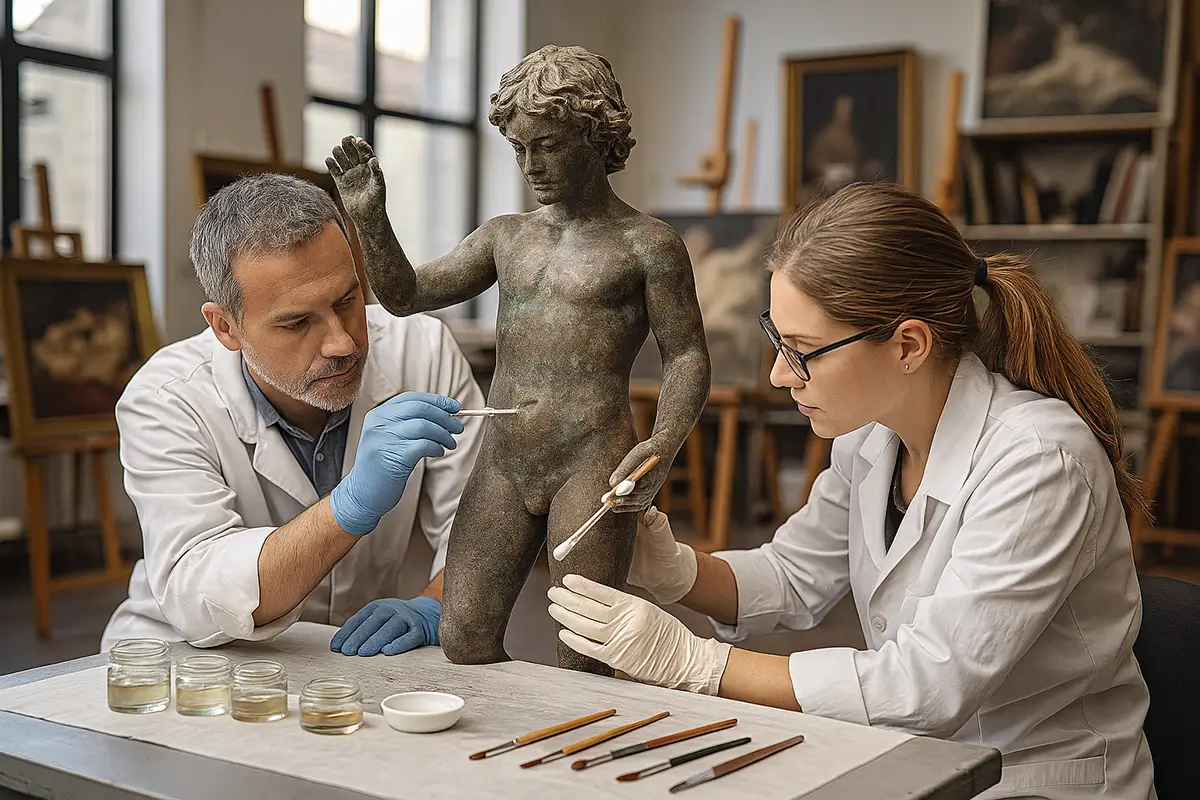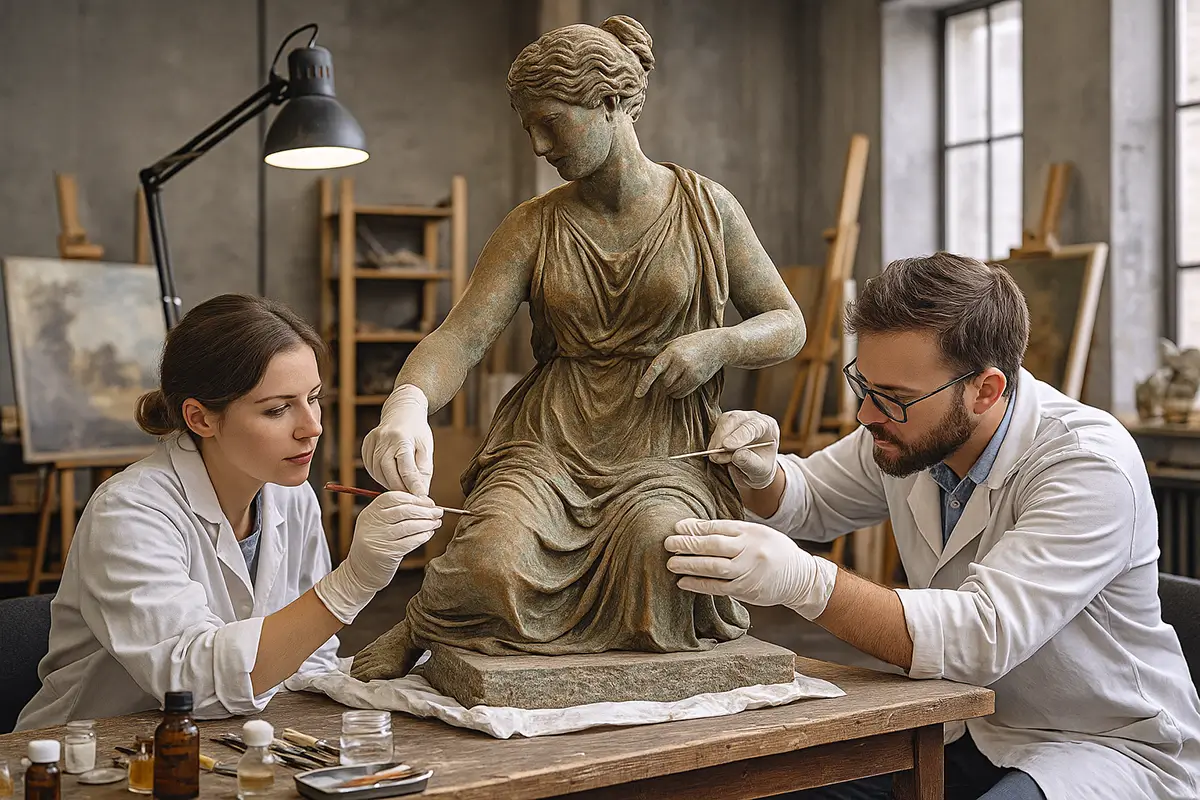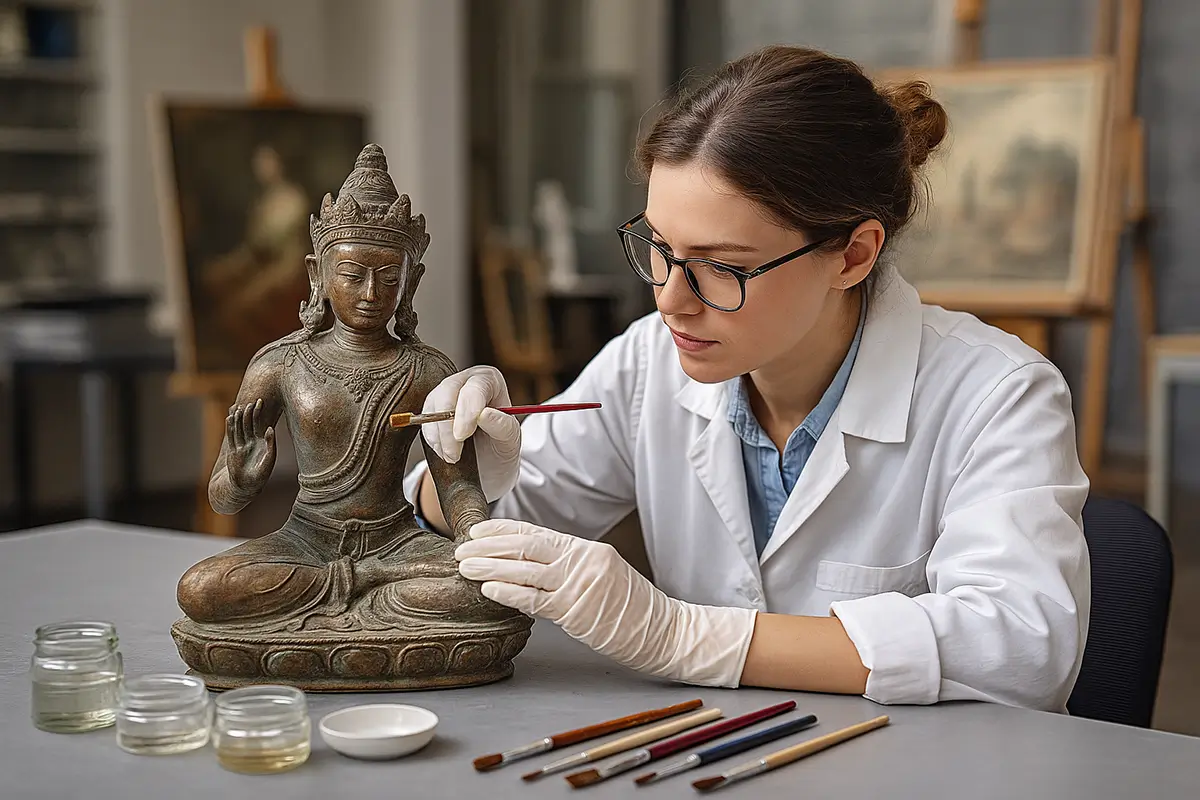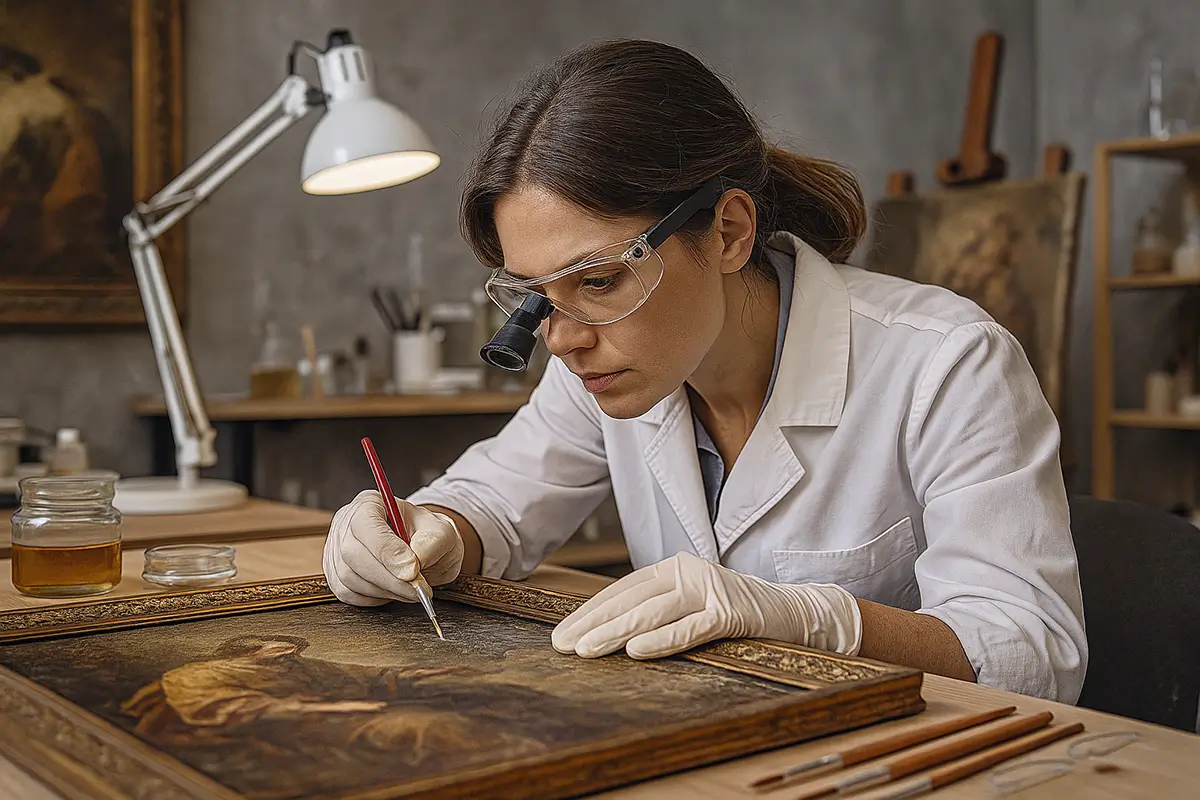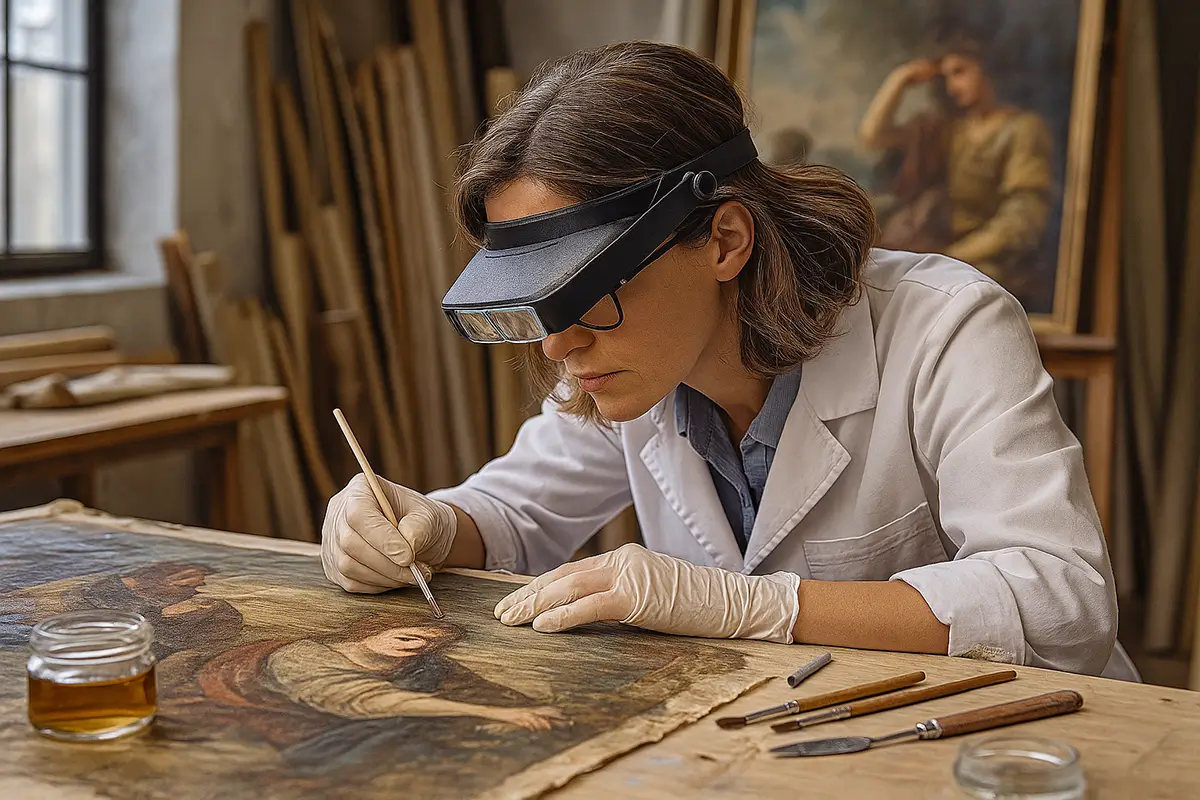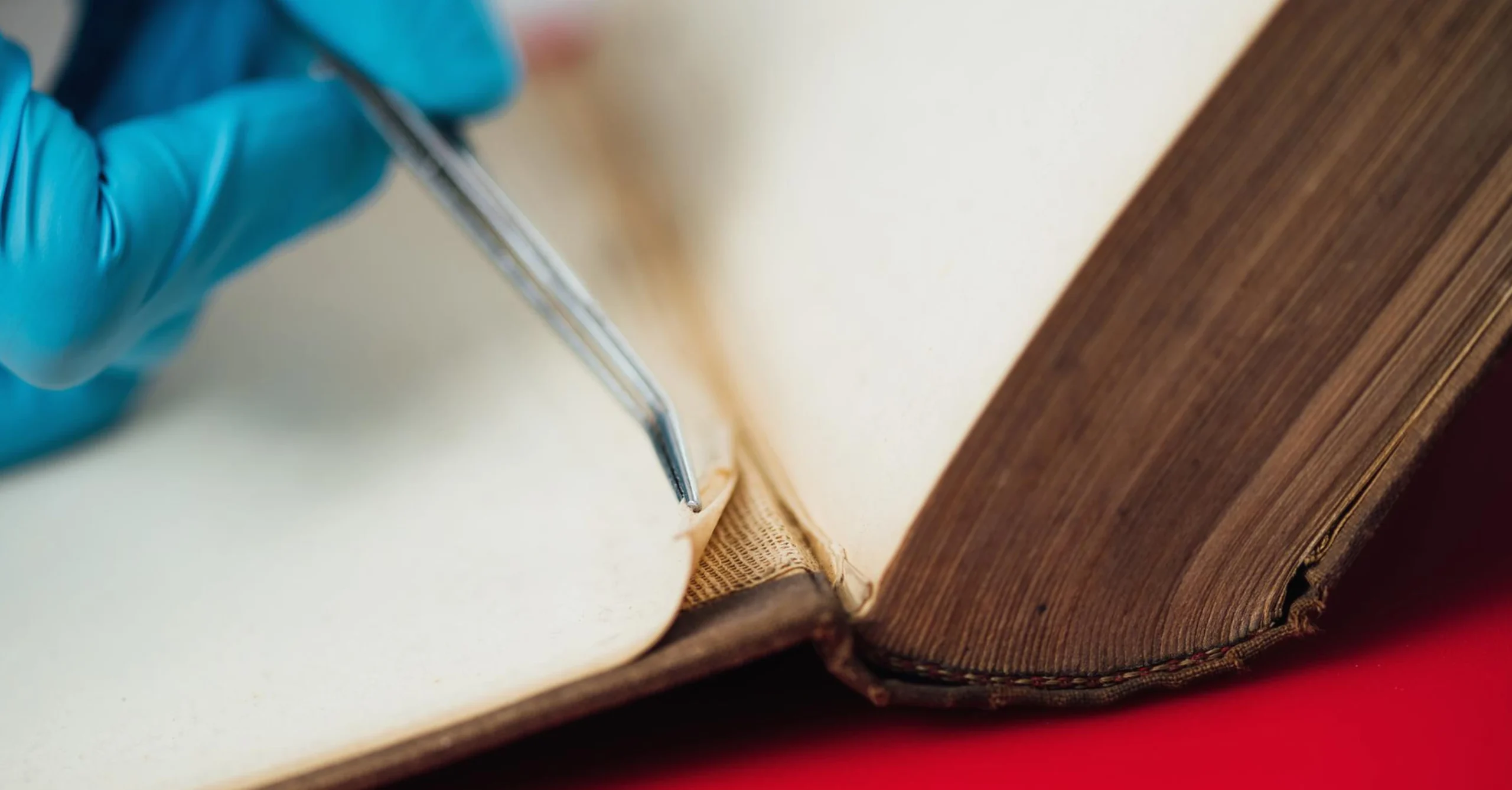Introduction: More than just repair
When we hear the word conservation, many imagine faded paintings being retouched or cracked sculptures being glued back together. But art conservation is much more—it is about preserving artworks for the long term, ensuring their cultural, historical, and financial value remains intact for future generations.
For collectors, corporates, galleries, and museums in India, where climate, pollution, and rapid urbanisation present unique risks, art conservation is not an afterthought. It is a necessary investment in safeguarding heritage.
This article explores what art conservation really means, how it differs from restoration, why it matters in India today, and what steps stakeholders should take to protect their collections.
What is art conservation?
Art conservation refers to the scientific, technical, and ethical practices aimed at preserving artworks in their original state for as long as possible.
Key elements:
- Prevention: Protecting artworks from deterioration (climate control, safe storage, documentation).
- Stabilisation: Addressing issues that may cause further damage (treating active mould, reinforcing weak materials).
- Minimal intervention: Only carrying out treatments that are necessary, reversible, and respectful of the original intent of the artist.
In short: Conservation is about preservation and protection, while restoration is about repair and recreation.
Conservation vs Restoration: The subtle but vital difference
Many people use the terms interchangeably, but they are distinct:
- Conservation – Prevents and slows deterioration; guided by science and ethics.
- Restoration – Attempts to return the artwork to its original appearance.
For example:
- Cleaning accumulated dust from a 19th-century oil painting = Conservation.
- Retouching missing paint layers to restore visual integrity = Restoration.
Both may be needed, but conservation always comes first.
Why conservation matters in India
1. Climate challenges
- Heat: Paint layers expand and contract, causing cracks.
- Humidity: Monsoons trigger mould, fungus, and warping.
- Dust and pollution: Airborne particles in cities like Delhi and Mumbai settle on surfaces, degrading colours.
2. Urbanisation and storage risks
- Poor storage conditions in homes, offices, and warehouses expose art to pests, leaks, and mechanical damage.
3. Heritage responsibility
- India has one of the world’s richest artistic heritages—miniatures, sculptures, textiles, and modern masters. Conservation ensures these treasures are not lost to neglect.
4. Financial stakes
- For collectors, conservation safeguards the market value of artworks. Neglect can reduce value dramatically, even making works unsellable.
5. Institutional credibility
- For museums and corporates, poorly conserved art can damage reputation. Conservation demonstrates professional cultural stewardship.
The process of art conservation
Conservation is a careful, step-by-step process:
1. Condition assessment
Experts examine the artwork, noting material type, existing damages, and risk factors.
2. Scientific analysis
Non-invasive tools such as UV light, X-rays, and infrared help identify hidden cracks, underdrawings, or chemical instabilities.
3. Preventive measures
- Safe storage in acid-free materials.
- Controlled lighting and climate conditions.
- Pest management protocols.
4. Conservation treatments
- Removing harmful dirt or deposits.
- Stabilising flaking paint layers.
- Reinforcing fragile paper or textiles.
5. Documentation
Every step is photographed and recorded to create a permanent conservation history.
6. Monitoring
Conservation is ongoing—works are re-checked periodically for changes.
Common conservation issues in Indian collections
- Paintings: Flaking, cracking, fading, fungal stains.
- Sculptures: Surface erosion, chipping, salt deposits.
- Photographs: Yellowing, brittleness, silvering of black-and-white prints.
- Textiles: Weak fibres, fading dyes, moth or insect damage.
- Mixed media: Modern works using plastics or synthetic materials may degrade unpredictably.
Case examples: Conservation in practice
Case 1: A corporate collection in Mumbai
A banking institution discovered fungal growth on several oil paintings during monsoon. Conservation treatments removed the fungus, stabilised the paint, and installed dehumidifiers to prevent recurrence.
Case 2: A private collector in Kolkata
Inherited watercolour miniatures were fading due to acidic mounts. Conservation experts replaced them with acid-free archival mounts, stabilising the works for the next generation.
Case 3: A public museum in Delhi
Sculptures stored in open courtyards showed salt deposits due to rain. Conservation stabilised the surfaces and installed protective coverings, preventing further deterioration.
The role of valuation in conservation
Conservation is not just cultural—it is financial.
- Valuation reports often note condition issues that affect market value.
- Insurers require conservation measures for coverage.
- Collectors see higher resale potential for well-conserved works.
Conservation protects not only heritage but also investment.
Ethical considerations in conservation
Globally, conservation follows a set of ethical guidelines:
- Reversibility: Any treatment should be reversible.
- Minimal intervention: Preserve as much of the original material as possible.
- Respect for artist intent: Avoid altering the meaning of the work.
- Transparency: Document every step for future conservators.
In India, adherence to these principles ensures that conservation respects both the spiritual and cultural significance of artworks.
Best practices for collectors and institutions
- Control environment: Keep artworks away from direct sunlight, damp walls, and fluctuating temperatures.
- Regular checks: Conduct visual inspections every few months.
- Document everything: Maintain records of provenance, valuations, and conservation history.
- Invest in preventive conservation: Cheaper than restoration later.
- Work with professionals: Avoid DIY fixes that may cause irreparable damage.
Technology in conservation
Digital and scientific tools are enhancing conservation practices:
- Infrared scanning to detect underdrawings.
- UV photography to highlight overpainting or repairs.
- 3D scanning for sculptures to record condition over time.
- AI tools predicting degradation patterns based on material analysis.
These innovations help conservators make precise, minimally invasive interventions.
Future of art conservation in India
As awareness grows, conservation is moving from being reactive to proactive. Future trends include:
- Dedicated conservation labs within museums and galleries.
- Professional training programs for new conservators.
- Integration with insurance and valuation, making conservation a standard requirement.
- Public-private partnerships to conserve India’s cultural treasures.
Conclusion: Preserving culture, protecting value
Art conservation is not about erasing history—it is about ensuring history survives. For India’s collectors, corporates, and institutions, conservation is both a cultural duty and a financial strategy.
Without conservation, artworks fade, crack, or decay—losing both meaning and value. With it, they endure as cultural legacies and valuable assets.
Explore ourArt Conservation Services. At TurmericEarth, we bring together science, ethics, and cultural sensitivity to protect artworks—ensuring they remain vibrant, authentic, and secure for future generations.



